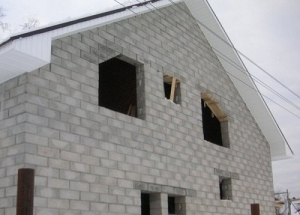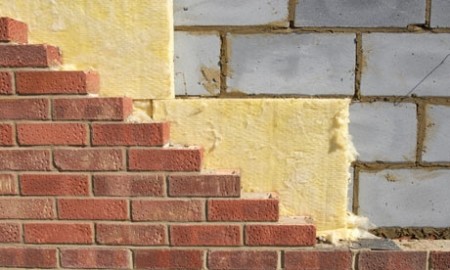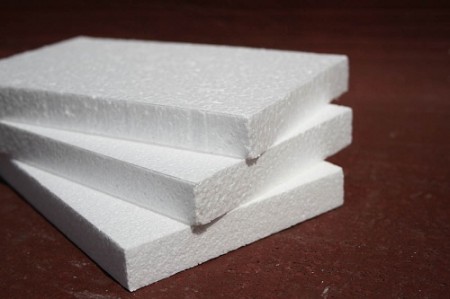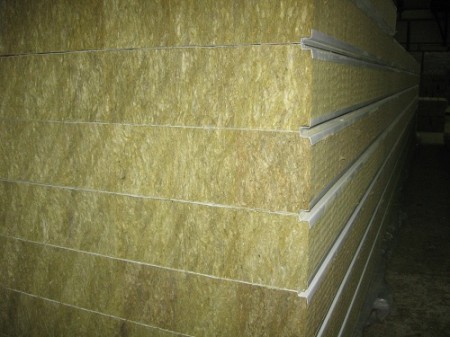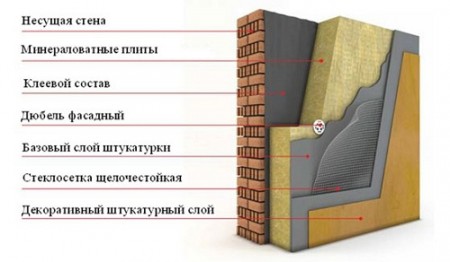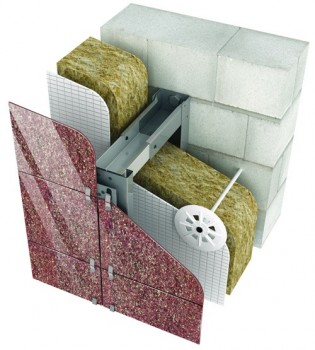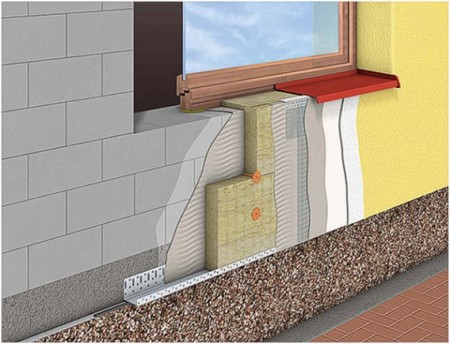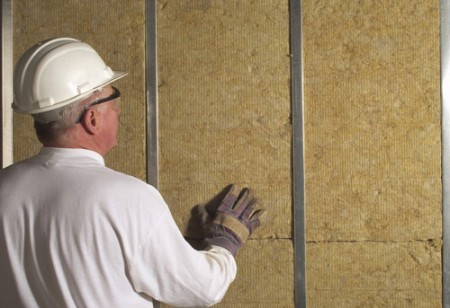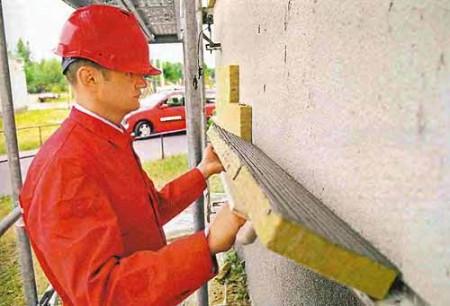Penoblok - relatively "young" but very popular building material, which has a lot of advantages: light weight, democratic price, good thermal insulation characteristics. Concerning, projects of foam blocks houses are very relevant. In addition, the walls of the foam block are erected several times faster than those made of bricks. Penoblok is considered a very "warm" material. Nevertheless, if the masonry wall is in one row, then its thickness will be approximately 30 centimeters. Therefore, many owners believe that the insulation of the house from the foam blocks will not be superfluous.
Content
Outside or inside?
It should be immediately clarified that it is undesirable to produce insulation of the house from the foam blocks for several reasons.
Firstly, by arranging the insulation inside, you prevent the walls from "breathing". Secondly, the dew point can shift to the inner surface of the wall, and in the winter it can condense moisture. And, thirdly, the inner area of the room decreases.
Of course, we will not argue that the insulation of walls from within is unacceptable. It often happens that this is the only possible option to insulate your home, especially in multi-apartment high-rise buildings. But the private house from the foam block is better to be insulated from outside, at the same time having solved a question and with furnish.
Than to warm?
The most popular thermal insulation materials for exterior wall insulation are foam plastic and mineral wool. Polyfoam is preferred if you need to cheaply and quickly insulate the building. With foam it is very easy to work, it is easy to install, but has several significant drawbacks:
- Polyfoam is very brittle, unstable to mechanical damage.
- Instantly destroyed under the influence of any solvent and most paints.
- Very poor air quality.
- Polyfoam is a combustible material that releases toxic substances during combustion.
- Rodent sheets are often found in sheets of styrofoam.
- And, finally, with foam it's not all, let's say, it's nice to work because of an unpleasant squeak.
As for mineral wool, it does not have any of the above drawbacks. But it is more difficult to work with this material, it costs more, but if the means allow, it should be preferred to him.
If to compare with polystyrene, mineral wool wins on several parameters:
- Does not burn.
- More resistant to mechanical damage.
- Do not collapse under the influence of chemicals.
- Good air, breathable material.
Technology of mineral wool insulation
Begin the insulation of the house from the foam block after finishing the interior work. This is done to ensure that all moisture used in building mixtures is freely released.
You need the following tools to work:
- Drill or screwdriver.
- Roulette.
- A hammer.
- Putty knife.
- Capacity for glue.
- Level.
- Knife.
- Rigid paint brush.
- Glasses, gloves for protection.
Immediately before the installation of plates, minvate walls must be cleaned of dust and dirt, seal all large cracks, soak the walls with a primer.
The insulation of external walls with mineral wool can be done using several methods.
"Wet" method
It is used most often. First, around the perimeter of the basement of the building is a cornice. This is done so that the plates of mineral wool are not displaced during the shrinkage of the building. A layer of glue is applied to the sheet of mineral wool, after which it is very tightly pressed against the wall. In the process of gluing the walls between the sheets there should be no crevices, since they represent "cold bridges". Simply put, through the cracks will get cold air and moisture.
Pasting of the walls with the mineral wool begins at the bottom of the plinth cornice. After the glue has dried, it is advisable to additionally fix the sheets of mineral wool with plastic dowels. After about three days, the cornice can be dismantled. After that, a layer of glue is applied to the heater and a reinforcing mesh is mounted. To strengthen the sheets at the corners of the building, near the door and window openings, use a perforated corner. After that, once the glue has dried, apply a primer and make the plastering work.
Method "Well"
When using this method, the insulation of the walls of the house from the foam blocks is almost identical to the previous one. The difference is that after mounting the reinforcing mesh the building is faced with siding or lining. As a result, the insulation plates are located between the wall and the lining.
"Ventilated" method
The most laborious and expensive method of warming. First, the walls are mounted brackets for the crate. The basement cornice is installed below, as in the "wet" method. The crate is made of metal profile. In the crate are installed sheets of insulation, pre-lubricated with glue, and additionally fastened with plastic dowels. On top of the lath with a heater mounted lining material.
However, it is undesirable to produce a house from the foam blocks with the help of this method because of the rather large weight of the lathing, insulation and finishing material.
Warming of internal walls
Sometimes it turns out that it is necessary to make the insulation of the wall from inside with mineral wool. This is most often connected with the impossibility of carrying out facade works. The technology of insulation from the inside is in many respects similar to the "ventilated" method: the metal profile is fixed to the width of the insulation plus two centimeters for the air layer. On the mineral slab is applied glue, the material is attached to the wall. A vapor barrier is attached to the mineral wool with two-sided adhesive tape. The construction thus obtained is closed with sheets of plasterboard with subsequent finishing.
What are the advantages of warming the house of foam blocks?
- Inside the building, heat is constantly accumulated.
- Saving on heating.
- Additional protection of the walls.
- Increase the service life of the building.
Ideally, for a complete thermal insulation of the house, it is necessary not only to insulate the outer walls with mineral wool, but also to insulate the roof, the foundation, the ceilings, the window and door openings.


